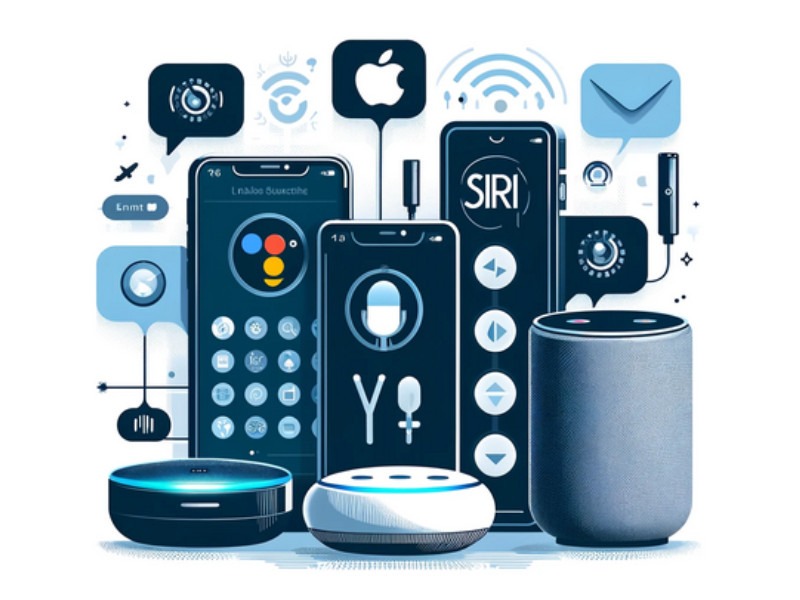Voice Channel Setting Up Google Assistant On Your Phone:
- Install the Google Assistant App:
- Download the Google Assistant app from the Google Play Store (Android) or App Store (iOS).
- Open the App:
- Launch the Google Assistant app.
- Sign In:
- Sign in with your Google account.
- Enable Voice Match:
- Go to
Settings>Assistant>Voice Match. - Follow the prompts to train the assistant to recognize your voice.
- Go to
- Activate Voice Commands:
- Say “Hey Google” or press the home button to start using Google Assistant.
Voice Channel On Your Smart Speaker:
- Plug in the Smart Speaker:
- Connect your Google Home or Nest device to a power source.
- Download the Google Home App:
- Install the Google Home app from the Google Play Store or App Store.
- Set Up the Device:
- Open the app and tap the
+icon to add a new device. - Follow the on-screen instructions to connect the speaker to your Wi-Fi network.
- Open the app and tap the
- Link Your Google Account:
- Sign in with your Google account.
- Enable Voice Match:
- Follow the prompts to train the assistant to recognize your voice.
Voice Channel Setting Up Siri On Your Phone:
- Open Settings:
- Go to
Settingson your iPhone or iPad.
- Go to
- Activate Siri:
- Tap
Siri & Search. - Turn on
Listen for "Hey Siri"andPress Side Button for Siri.
- Tap
- Train Siri:
- Follow the on-screen prompts to train Siri to recognize your voice.
- Enable Siri Suggestions:
- Toggle on
Suggestions in Search,Suggestions in Look Up, andSuggestions on Lock Screen.
- Toggle on
On Your Smart Speaker (HomePod):
- Plug in the HomePod:
- Connect your HomePod to a power source.
- Set Up Using Your iPhone:
- Hold your iPhone near the HomePod.
- Follow the on-screen instructions that appear on your iPhone.
- Assign HomePod to a Room:
- Select the room where the HomePod is located.
- Enable Personal Requests:
- Allow Siri to access your personal information to respond to requests.
Voice Channel Setting Up Amazon Alexa
On Your Phone:
- Install the Alexa App:
- Download the Alexa app from the Google Play Store or App Store.
- Open the App:
- Launch the Alexa app.
- Sign In:
- Sign in with your Amazon account.
- Enable Voice Commands:
- Tap
Settings>Alexa on this Phone. - Follow the prompts to enable voice commands.
- Tap
On Your Smart Speaker:
- Plug in the Echo Device:
- Connect your Amazon Echo to a power source.
- Download the Alexa App:
- Install the Alexa app from the Google Play Store or App Store.
- Set Up the Device:
- Open the app and tap the
Devicesicon. - Tap the
+icon to add a new device. - Follow the on-screen instructions to connect the Echo to your Wi-Fi network.
- Open the app and tap the
- Link Your Amazon Account:
- Sign in with your Amazon account.
- Enable Voice Match:
- Follow the prompts to train Alexa to recognize your voice.
Reference
Gartner’s insights on voice channels highlight their growing significance in customer service and experience management. According to Gartner, voice channels, integrated with AI and natural language processing (NLP) technologies, are revolutionizing how businesses interact with customers by offering personalized, real-time assistance. These advancements lead to higher customer satisfaction and efficiency in handling inquiries.
Forrester Research emphasizes the strategic importance of voice technology in enhancing customer engagement. Their studies show that businesses leveraging voice channels see a significant improvement in user interaction quality, leading to better customer loyalty and retention. The integration of voice assistants and smart speakers into customer service frameworks is particularly noted for its impact on user accessibility and convenience.
McKinsey on Digital Customer Service
McKinsey & Company explores the future of digital customer service, with a focus on the role of voice channels. Their research indicates that voice channels are becoming indispensable for businesses aiming to provide seamless, omnichannel customer experiences. The report discusses how voice technology, powered by AI, enhances interaction quality, reduces service costs, and improves overall customer satisfaction.









